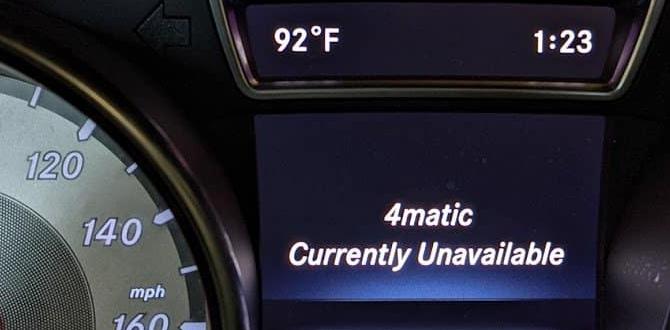In the realm of automotive excellence, few names command the respect and admiration that Mercedes-Benz does. With the advent of advanced vehicular technologies, diagnosing issues within sophisticated systems like Mercedes-Benz’s 4Matic all-wheel drive can be a complex undertaking. These systems incorporate intricate electronic stability controls, differential locking mechanisms, and adaptive torque distribution.
When these components malfunction, precise troubleshooting becomes imperative. Understanding the common problems, underlying technical principles, and the most effective diagnostic methods is crucial for maintaining optimal performance. Read on to unravel the intricacies of diagnosing Mercedes-Benz 4Matic issues and ensure your vehicle remains in peak condition.
Mercedes Benz Diagnose 4Matic Issues: A Comprehensive Guide

Conclusion
In conclusion, diagnosing issues with the Mercedes Benz 4Matic system requires a thorough understanding of both its mechanical and electronic components. Regular maintenance, timely intervention, and utilization of advanced diagnostic tools are key to ensuring the longevity and performance of this sophisticated all-wheel-drive system. Trust in professional expertise can save both time and expense in the long run.
FAQs
What Are The Most Common Symptoms Indicating Potential Issues With The 4Matic System In A Mercedes Benz?The most common symptoms indicating potential issues with the 4Matic system in a Mercedes Benz include unusual noises such as grinding or whining from the drivetrain, difficulty in steering or loss of traction, warning lights on the dashboard like the ABS or traction control lights, and uneven tire wear. These signs typically suggest problems with the transfer case, differential, or axle components that require professional diagnosis and repair.
How Can One Effectively Diagnose Problems With The 4Matic System Using Diagnostic Tools?Effectively diagnosing problems with the 4Matic system involves using an advanced diagnostic scanner compatible with Mercedes-Benz vehicles to read and interpret fault codes. Access the 4Matic control module via the scanner to retrieve current and stored error codes, which can provide insights into specific malfunctioning components or systems. Complement this with real-time data monitoring to observe the system’s behavior under various conditions, and refer to the manufacturer’s technical documentation for guidance on interpreting results and identifying potential issues. Combining these steps ensures a thorough and accurate diagnosis, facilitating targeted repairs or maintenance.
What Are The Recommended Steps For Troubleshooting Electronic 4Matic System Faults In Mercedes Benz Vehicles?To troubleshoot electronic 4Matic system faults in Mercedes-Benz vehicles, first, use an OBD-II scanner to diagnose and retrieve error codes. Next, consult the vehicle’s service manual and diagnostic trouble code (DTC) definitions to understand the issue. Perform a visual inspection of wiring, sensors, and connectors related to the 4Matic system. Finally, follow the recommended repair procedures for the identified faults, and clear the error codes using the scanner after repairs are completed.
Are There Specific Error Codes Associated With 4Matic System Failures, And How Can They Be Interpreted?Yes, specific error codes are associated with 4Matic system failures in Mercedes-Benz vehicles. These codes can be read using an OBD-II scanner or specialized diagnostic tools that interface with the car’s onboard computer. Each error code corresponds to a particular issue within the 4Matic system, such as sensor malfunctions or mechanical problems. Interpreting these codes usually requires referring to the vehicle’s service manual or consulting with a trained technician.
What Preventive Maintenance Measures Can Help Avoid Issues With The 4Matic System In Mercedes Benz Cars?Preventive maintenance for the 4Matic system in Mercedes Benz cars includes regular checks and timely replacement of differential and transfer case fluids to ensure optimal lubrication. Keeping an eye on the condition of tires and maintaining proper tire pressure helps ensure balanced torque distribution. Regular inspections and updates of the software controlling the 4Matic system can also preemptively address potential problems. Lastly, routine servicing according to the manufacturer’s schedule helps identify and resolve wear and tear issues early.
